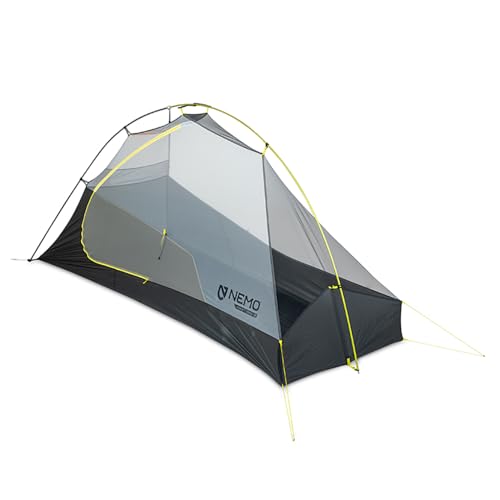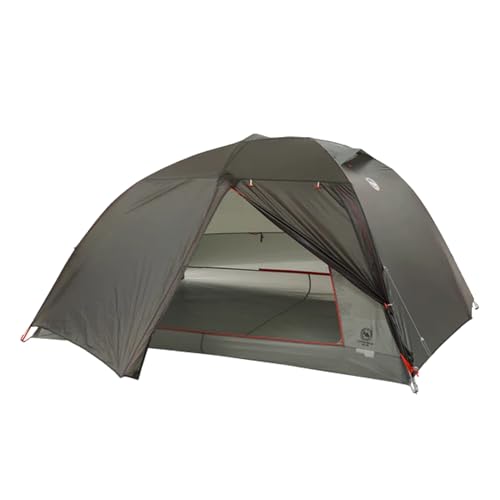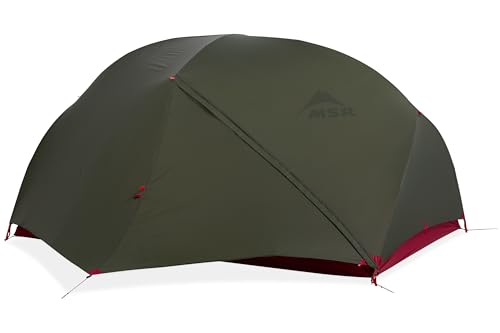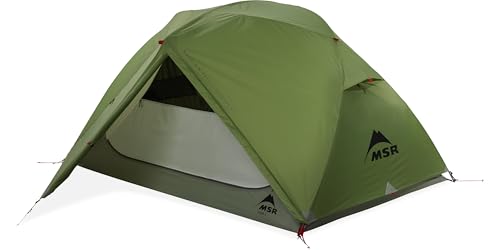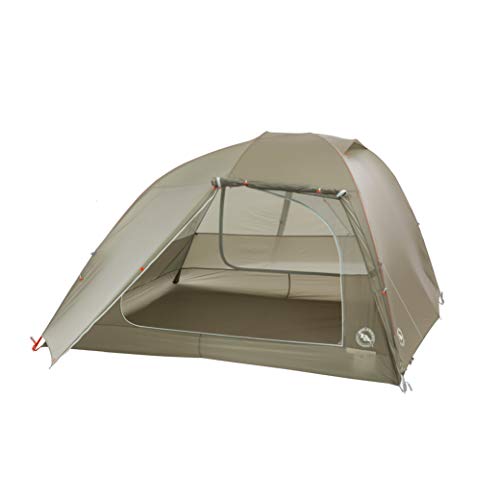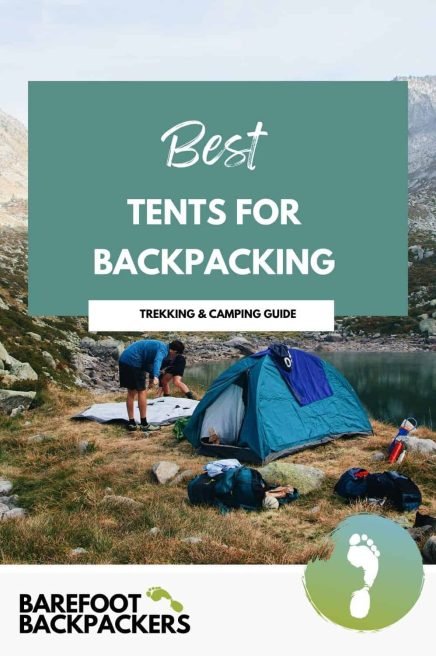When it comes to the best tents for backpacking, choosing the right one can be one of the best investments for your outdoor adventures. The right tent is your base, protecting you from the elements and providing comfort after long days on the trail. No matter if you’re tackling alpine ridgelines, exploring national parks, or hiking deep into the wilderness, a reliable trekking tent provides security and peace of mind no matter the terrain. Investing in quality gear ensures you’ll rest well and stay dry, even when the weather turns. This guide will help you do just that.
There’s an incredible variety of trekking tents out there, each designed with specific priorities in mind. Ultralight tents appeal to thru-hikers who count every ounce, and are the best two-person tents for backpacking. There are also freestanding models that excel on rocky or uneven ground. Four-season shelters keep you safe in high-altitude or snowy conditions, while pop-up or dome-style tents cater to casual trekkers or festival-goers. Your ideal tent depends on where you trek, how you travel, and how much comfort you’re willing to carry.
Read more: Best Ultralight Backpacks for Hiking
Now, modern designs are smarter than ever. High-strength poles, double ripstop fabrics, and waterproof coatings are standard across many of today’s best tents for backpacking. Thoughtful features like dual vestibules, stargazing panels, and easy-pitch pole systems make setting up camp faster and more enjoyable.
In this guide, we’ve handpicked some of the best tents for trekking across categories, from the best value and ultralight designs to four-season shelters and compact options for minimalist explorers. Each one is reliable, trail-tested, and built to support your adventures, whether you’re hiking the Rockies, camping in Yosemite, wildcamping in the Scottish Highlands, or bikepacking Europe.
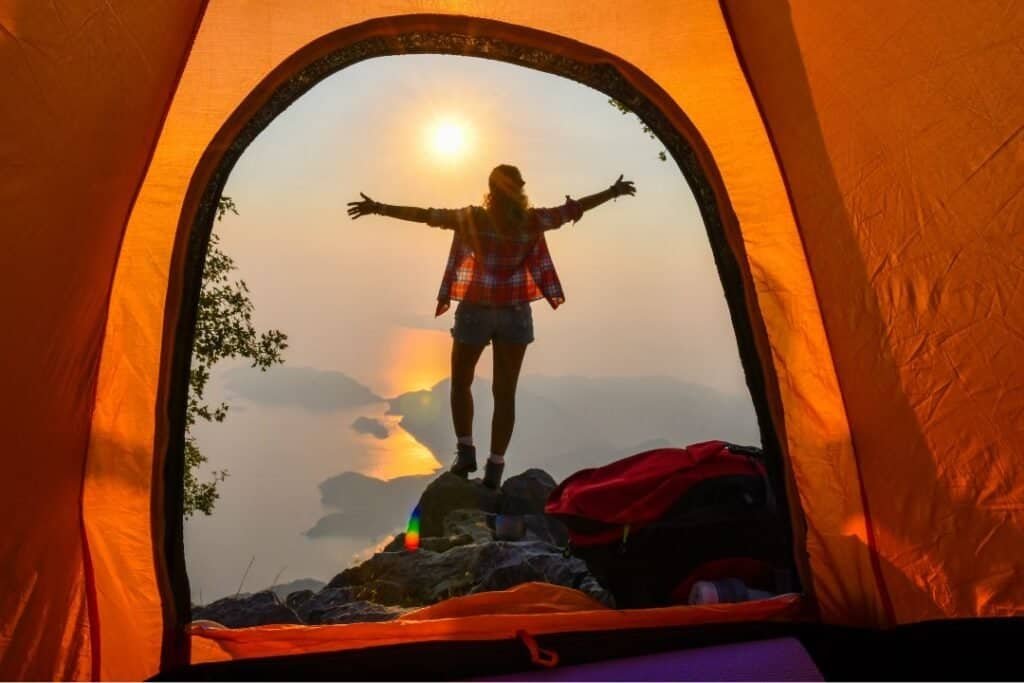
This blog is supported by the community. We may earn a small commission if you purchase through our links. As an Amazon Associate, we earn from qualifying purchases. See our Privacy Policy.
Best Two-Person Tents for Backpacking at a Glance
- Best Overall 2 & Best 2 Person Tent: NEMO Equipment Dagger OSMO Lightweight Backpacking Tent –
- Best 1 Person Tent: NEMO Hornet OSMO
- Best Ultralightweight Tent: Near Zero Ultralight 2P
- Best Value Option: Sierra Designs Meteor Lite
- Best Four-Season Tent: ALPS Mountaineering Tasmanian 2
- Best Design: Big Agnes Copper Spur UL
- Best for Bikepacking: MSR Hubba Hubba Bikepack 2
- Best for All-Round Use: MSR Elixir 2
- Best 4 Person Tent: Big Agnes Copper Spur HV UL4
Best Tent for Backpacking
The NEMO Dagger OSMO is one of the most livable backpacking tents on the market, combining outstanding comfort, sustainability, and strength in one versatile design. The updated version features taller doors, a higher peak, and 22% more vestibule space — all while keeping the weight impressively low. Made with NEMO’s proprietary OSMO ripstop fabric, it offers superior waterproofing, reduced sag, and impressive durability even in wet or windy conditions.
Its user-friendly hardware, Nightlight Pockets, and Landing Zone waterproof gear tub make it perfect for extended treks or weekend escapes. For backpackers seeking comfort without compromise, this is a tent you can trust from the desert to alpine ridges.
Key specs
Weight 1.72 kg
Season rating 3-season
Floor dimensions 223 x 127 cm
Peak height 109 cm
Fabric OSMO poly-nylon ripstop
Setup Freestanding, hubbed pole system
The Hornet OSMO 1P is the go-to ultralight shelter for solo trekkers who refuse to compromise between comfort and weight. Weighing just 1 lb 13 oz, it packs down incredibly small yet offers impressive internal space thanks to NEMO’s clever Flybar™ pole clip and volumizing guy-outs. The design maximizes headroom and foot clearance while keeping the pole structure minimal — ideal for thru-hikers or fast-moving backpackers. The proprietary OSMO™ fabric sets this tent apart, offering four times longer-lasting water repellency and three times less stretch when wet, ensuring reliable protection through unpredictable mountain conditions.
Every detail of the Hornet OSMO is designed with thoughtful precision. Features like the Gatekeeper™ one-handed door tie-backs, Nightlight Pockets™ that diffuse your headlamp into a soft lantern glow, and the Divvy Cube™ stuff sack make life on the trail simpler and more organized. The bluesign® approved floor and PFAS-free recycled materials reflect NEMO’s commitment to sustainable design. Whether you’re embarking on a multi-day trek or a fast solo overnight, this tent delivers the ideal balance of livability, protection, and packability — a premium ultralight choice that performs far beyond its weight class.
Key specs
Capacity 1 person
Weight 1 lb 13 oz (minimum) / 2 lb 4 oz (packed)
Season 3-season
Peak height 39 in
Floor area 20.6 sq ft
Vestibule area 7.3 sq ft
Floor dimensions 87 x 39/30 in
Packed size 12.5 x 7.5 x 3 in
Sierra Designs has struck a brilliant balance between space, durability, and eco-conscious design with the Meteor Lite. This freestanding, two-door tent is impressively roomy for its weight, with dual vestibules and a clever stargazer rainfly that rolls back for night sky views. Made from recycled materials and built to last, it’s a great choice for hikers who want quality without breaking the bank.
Its weatherproof bathtub floor and sturdy aluminum poles keep you protected in unpredictable conditions. With thoughtful sustainability touches and generous living space, this is a value-packed tent that easily holds its own against premium competitors.
Key specs
Weight 2.1 kg
Season rating 3-season
Peak height 104 cm
Fabric 68D 190T Poly Taffeta 3000mm PU
Setup Freestanding, hubbed aluminum poles
Built for adventure in all conditions, the ALPS Mountaineering Tasmanian 2 is a true four-season tent designed to handle snow, wind, and freezing temperatures. With a 5000mm-coated floor, full-coverage fly, and weatherproof pole system, it’s made to withstand whatever nature throws at you.
Dual doors and vestibules offer easy access and gear storage, while interior mesh pockets and vents keep condensation in check. Though heavier than ultralight options, its reliability in extreme conditions makes it an ideal pick for high-altitude trekking or winter camping.
Key specs
Weight 4.37 kg
Season rating 4-season
Peak height 137 cm
Fabric 75D polyester fly, 5000mm floor coating
Setup Freestanding with aluminum poles
The Big Agnes Copper Spur UL is a favourite among seasoned trekkers for good reason — it blends ultralight weight with luxury-like comfort. The high-volume design provides generous headroom, while the dual vestibules and awning-style doors extend your living space and protect you from the elements.
Its proprietary ripstop nylon fabric is tough yet featherlight, and setup is seamless thanks to the TipLok Buckle system. Whether you’re backpacking through the Rockies or camping off-grid, this tent delivers exceptional all-weather performance and long-term value.
Key specs
Weight 1.36 kg
Season rating 3-season
Peak height 102 cm
Fabric Ultralight double ripstop nylon
Setup Freestanding with DAC Featherlite poles
Designed specifically for cyclists, the MSR Hubba Hubba Bikepack 2 is compact, tough, and cleverly engineered. The short-fold DAC poles fit easily on handlebars or frame bags, while the waterproof handlebar stuff sack doubles as a storage bag.
Inside, it’s roomy and well-ventilated, with dual vestibules and multiple drying lines for wet gear. Its lightweight build and rugged construction make it a perfect tent for bikepacking adventures where space and durability matter most.
Key specs
Weight 1.4 kg
Season rating 3-season
Peak height 106 cm
Fabric DuraShield-coated ripstop nylon
Setup Freestanding, compact DAC poles
Near Zero is a relatively new player, but their Ultralight 2P or 3 Person tent has quickly earned attention. Weighing just 1.79 kg, it packs down small and offers impressive ventilation with its full mesh inner and 20D nylon rainfly. Dual doors and vestibules make it practical for shared treks, while smart engineering keeps it stable and easy to pitch.
It’s best suited for summer and fair-weather trekking but offers great airflow and comfort for its weight. For lightweight adventures on a budget, this is an excellent ultralight option.
Key specs
Weight 1.79 kg
Season rating 3-season
Peak height 104 cm
Fabric 20D ripstop nylon
Setup Freestanding, colour-coded poles
Compact, durable, and reliable, the ALPS Mountaineering Helix 2 is ideal for those who value simplicity and ease. The lightweight aluminum frame and mesh walls create a well-ventilated, easy-pitch tent that’s great for summer trekking or weekend backpacking.
Despite its small pack size, it offers plenty of interior room for two people and two vestibules for gear storage. If you want a tough tent that sets up in minutes, this is a solid choice.
Key specs
Weight 1.7 kg
Season rating 3-season
Peak height 104 cm
Fabric 20D ripstop nylon
Setup Freestanding, 3-pole frame
The MSR Elixir 2 is a versatile, well-balanced tent that combines comfort, strength, and simplicity. Its freestanding design and near-vertical walls make it ideal for multi-day treks, with enough room for two large mats and plenty of headroom.
Durable fabrics, great waterproofing, and intuitive setup make it a dependable shelter for all types of adventures. It’s a bit heavier than ultralight options, but its stability and reliability are hard to beat.
Key specs
Weight 2.77 kg
Season rating 3-season
Peak height 100 cm
Fabric 75D polyester fly
Setup Freestanding, colour-coded poles
For casual trekkers or car campers, the Coleman Sundome offers unbeatable value. Quick to pitch and reliably waterproof, it features a WeatherTec system with welded corners and inverted seams to keep rain out.
It’s heavier than backpacking-specific tents, but for festivals, short hikes, or family trips, it delivers easy comfort and solid protection at a budget-friendly price.
Key specs
Weight 2.72 kg
Season rating 3-season
Peak height 150 cm
Fabric Polyester with WeatherTec coating
Setup Freestanding, fibreglass poles
For group trekking adventures, the Copper Spur HV UL4 is unmatched. With a 4 person and 5 person option, this is great for families or larger groups alike. It’s subtle copper colour also makes it good for through hikes. Plus, its pre-bent poles and high-volume hub system create exceptional space and strength while keeping weight manageable for a four-person / five-person tent.
Dual vestibules, huge doors, and awning-style openings make it a versatile shelter for families or teams. It’s not cheap, but for reliability and space-to-weight ratio, it’s one of the best four-person trekking tents available.
Key specs
Weight 2.58 kg
Season rating 3-season
Peak height 125 cm
Fabric Double ripstop nylon
Setup Freestanding, TipLok Buckle system
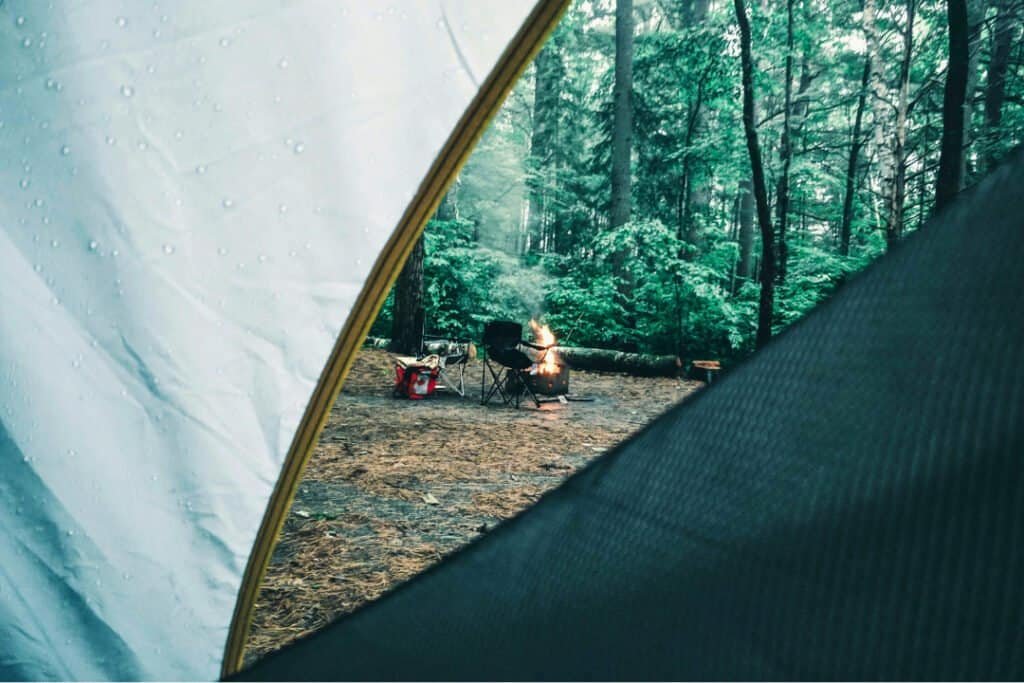
Why Choose a Two-Person Tent for Trekking?
Two-person tents strike the ideal balance between comfort, weight, and practicality for most trekking adventures. They offer enough interior space for you and your gear without adding unnecessary bulk to your pack. Whether you’re hiking solo and want extra room or sharing with a partner, these tents provide flexibility across seasons and terrains.
A good two-person tent should pack small, pitch easily, and provide reliable weather protection. Models like the NEMO Dagger OSMO or Big Agnes Copper Spur UL exemplify this, combining lightweight materials with smart design touches like dual vestibules and tall peaks for livability. For most backpackers, this tent size offers the best ratio of comfort to portability — a true sweet spot for multi-day treks.
Key Features to Look for in a Trekking Tent
When choosing the best tent for trekking, pay close attention to weight, pack size, weatherproofing, and ventilation. A durable floor and high waterproof rating will protect you from rain and ground moisture, while mesh panels help manage condensation in humid climates. Freestanding designs are easiest to pitch on rocky terrain, while semi-freestanding or trekking pole-supported tents save weight for ultralight hikers.
Interior space and headroom are also worth noting — look for vertical walls or extended peaks if you plan to spend time inside. Features like gear lofts, interior pockets, and double doors add convenience during long trips. Ultimately, your tent should reflect your trekking style: ultralight for long-distance, robust for alpine, or roomy for comfort.
Three-Season vs Four-Season Tents
Three-season tents are the most popular choice for trekkers, offering excellent protection from spring through autumn. They’re designed to handle rain, moderate wind, and mild cold, with ample ventilation to keep you cool during warmer nights. These models are lighter and easier to pack, making them ideal for most backpacking routes.
Four-season tents, on the other hand, are engineered for winter and alpine conditions. They use stronger poles, heavier fabrics, and fewer mesh panels to retain warmth and resist snow load. While bulkier and more expensive, they’re essential for mountaineering, snow trekking, or high-altitude expeditions. If you mainly hike in fair weather, stick with a three-season — but for extreme conditions, the ALPS Tasmanian 2 or similar is your safest bet.
The Benefits of Ultralight Backpacking Tents
Ultralight tents have transformed modern trekking, allowing adventurers to cover more ground with less strain. Made from high-strength, low-weight materials like ripstop nylon and Dyneema, they often weigh under 1.5 kg while still offering full weather protection. The best ultralight tents, such as the Near Zero Ultralight 2P, sacrifice little in comfort but save crucial space and energy on long trails.
The key is balancing minimalism with durability — ultralight fabrics require care and occasional maintenance. Still, for thru-hikers, solo adventurers, and those counting every gram, an ultralight tent can be a game-changer, letting you trek further and faster without compromising safety.
How to Care for and Store Your Tent
Taking proper care of your tent ensures your trekking tent lasts for years. Always dry it completely before packing away, even if it’s just from morning dew – moisture can lead to mildew and weakened seams. Trust us, it’s worth the effort. After every trip, gently clean the fly and floor with lukewarm water and a soft sponge (avoid detergents that damage coatings).
Store your tent loosely in a cool, dry place rather than compressed in its stuff sack. Periodically check zippers, seams, and guy lines for wear. With mindful upkeep, a quality trekking tent can easily last a decade or more — a worthy investment for countless adventures.
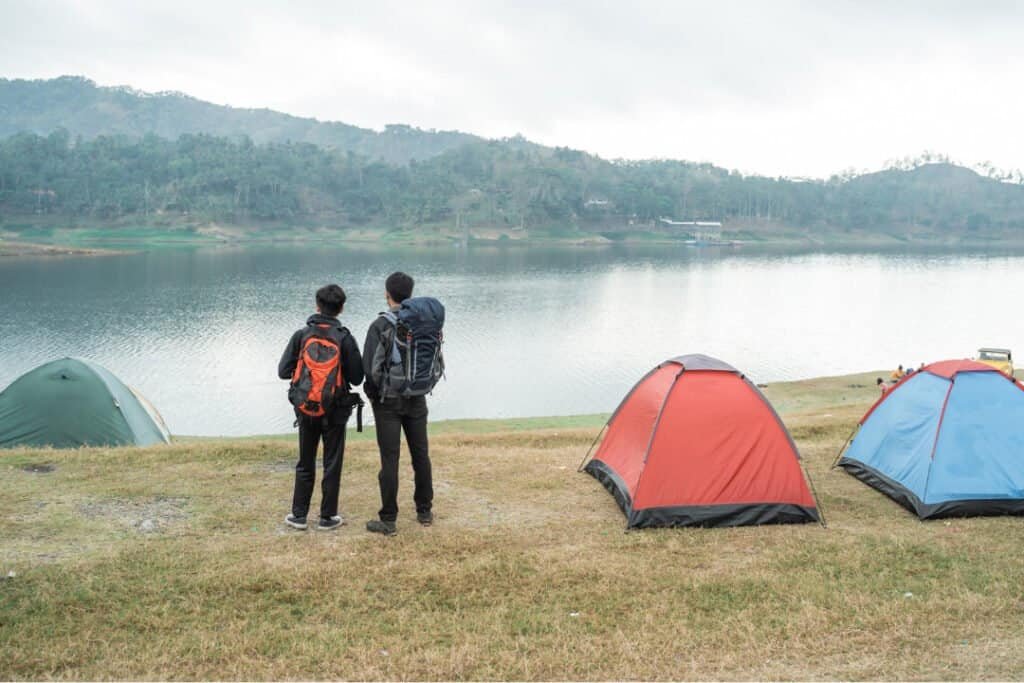
FAQs: Best Tents for Backpacking
What makes a tent good for trekking?
A good trekking tent balances weight, durability, and weather protection. It should be light enough to carry comfortably over long distances while offering dependable shelter from wind, rain, and cold. Double-wall construction with a waterproof fly is ideal for three-season use. Look for strong aluminum poles, reinforced seams, and breathable mesh panels. A good trekking tent also sets up easily after a long day on the trail — saving energy and frustration when conditions change quickly.
For wild campers or long-distance hikers, a good backpacking tent is one of the most liberating pieces of gear you’ll own. If you decide to go camping, here is a great resource to ensure you stay safe from the U.S. National Park Service.
How do I choose the right size tent for backpacking?
For most trekkers, a two-person tent is the most versatile size. It offers enough space for one person and gear or two people in close quarters. Solo backpackers might prefer a one-person tent for weight savings, while groups should look at three- or four-person designs. Consider your comfort preferences — if you like to keep your backpack inside or need room to move, size up. Always check floor dimensions and peak height before buying, as “two-person” can vary between brands.
Are ultralight tents durable enough for long treks?
Yes — modern ultralight tents use advanced materials that are surprisingly tough for their weight. Ripstop nylon, Dyneema, and silpoly fabrics resist tears, while high-tensile poles provide reliable structure. However, ultralight tents require a bit more care: clear sharp rocks before pitching, avoid over-tensioning guy lines, and store them properly when wet. If treated well, quality ultralight tents can easily last hundreds of nights on the trail, offering the perfect mix of weight savings and durability.
What’s the difference between freestanding and non-freestanding tents?
Yes — modern ultralight tents use advanced materials that are surprisingly tough for their weight. Ripstop nylon, Dyneema, and silpoly fabrics resist tears, while high-tensile poles provide reliable structure. However, ultralight tents require a bit more care: clear sharp rocks before pitching, avoid over-tensioning guy lines, and store them properly when wet. If treated well, quality ultralight tents can easily last hundreds of nights on the trail, offering the perfect mix of weight savings and durability.
What’s the difference between freestanding and non-freestanding tents?
Freestanding tents hold their shape without needing to be staked down, making them quick and easy to pitch on hard or rocky ground. Non-freestanding tents rely on stakes or trekking poles for support, which saves weight but requires more setup space and care. Freestanding models are ideal for beginners or those who camp in mixed terrain, while experienced ultralight trekkers often prefer non-freestanding designs for their compactness and reduced weight.
Can I use a three-season tent in winter?
You can — but be on the cautious side. Three-season tents handle mild winter conditions like light snow or cold rain, but they’re not built for heavy snow loads or sub-zero windchill. The poles and fabrics aren’t as strong or insulated as four-season models. If you expect only cool temperatures and no storms, you can winter camp with a three-season tent by pairing it with a quality sleeping bag and insulated mat. For true winter trekking or alpine expeditions, however, a dedicated four-season tent is essential for safety and warmth
Enjoyed our guide? Read more
The Best Travel Backpacks: The Ultimate Guide
7 Best Backpacks for Women: Travel to Treks
The Best 40L Men’s Backpacks for Travel



